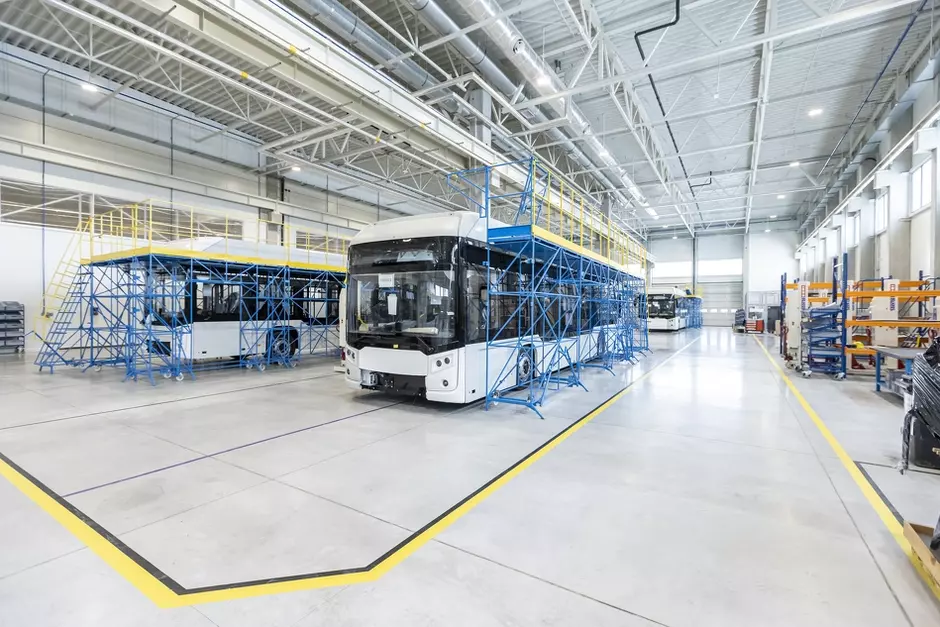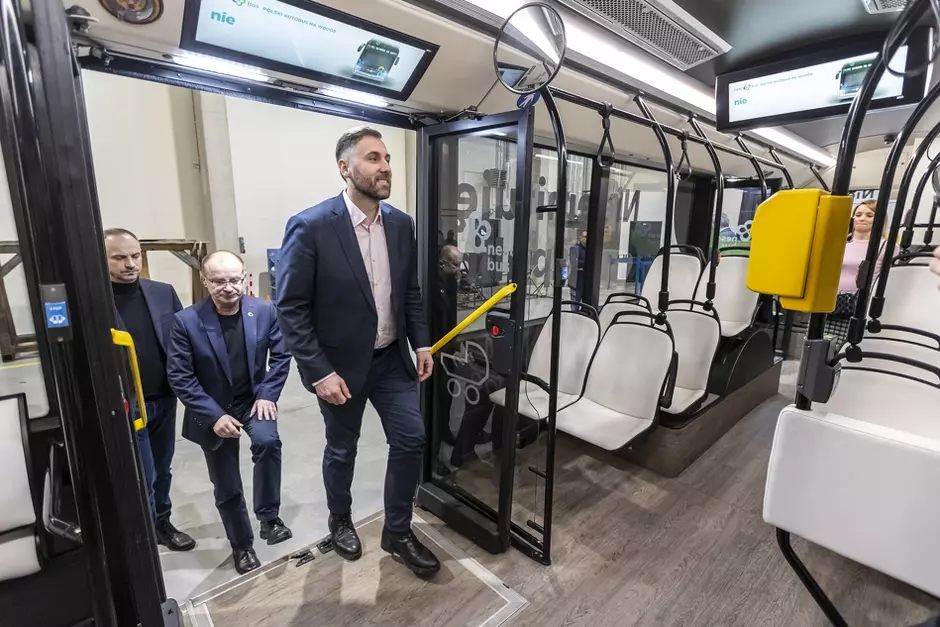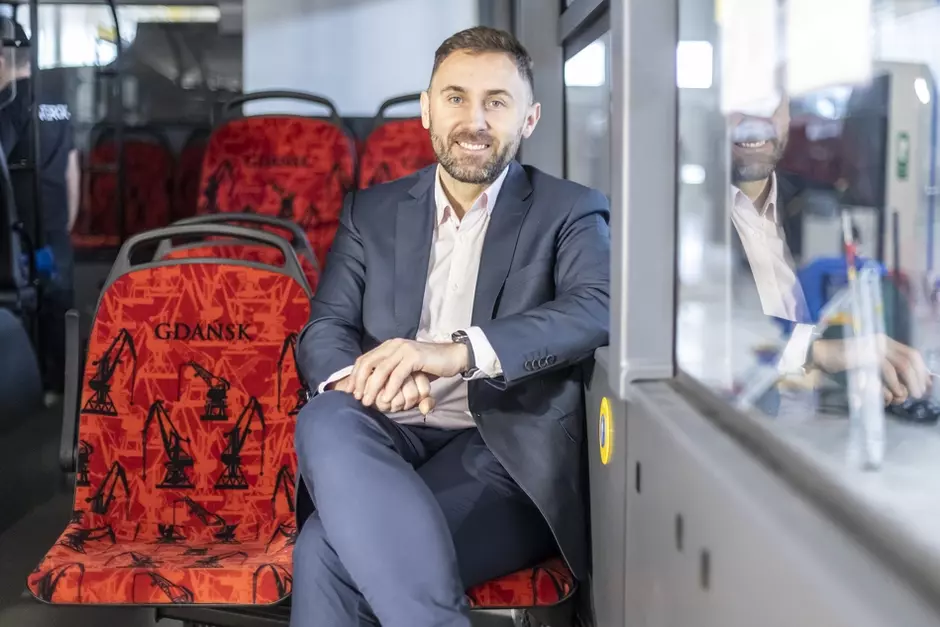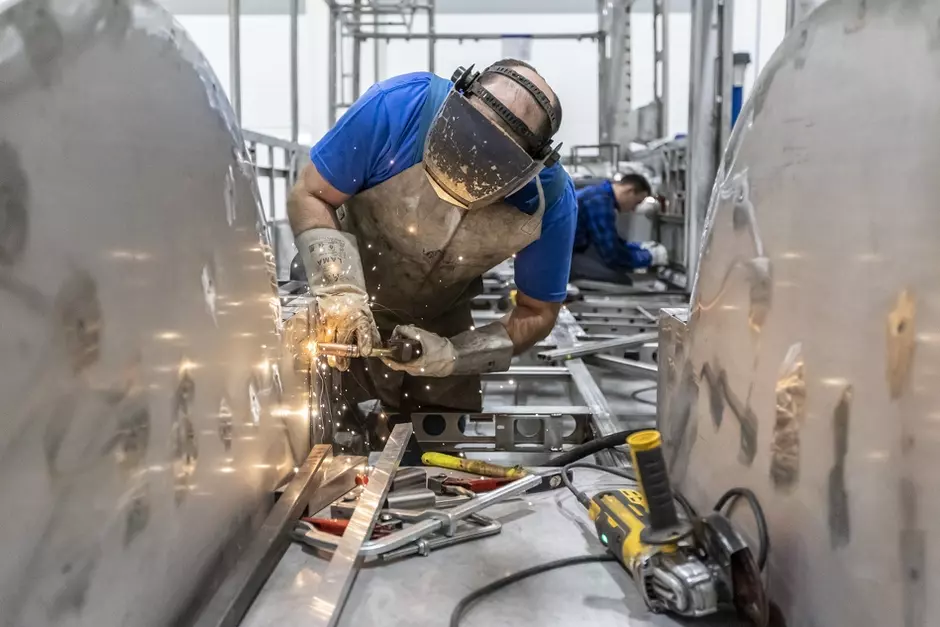Hydrogen buses in Gdansk are a milestone in the field of ecology and at the same time full travel comfort without harmful emissions. The city has announced that Gdansk’s fleet of state-of-the-art hydrogen buses will increase by 10. The new hydrogen buses will hit the streets of Gdansk later this year!
Polish hydrogen buses in Gdansk
The new buses are fully zero-emission vehicles and completely manufactured in Poland. The Polish hydrogen vehicle factory was visited by Piotr Borawski, deputy mayor of Gdansk for entrepreneurship and climate protection, and a delegation from Gdansk Buses and Trams – Maciej Lisicki and Jerzy Wiatr. The Gdansk delegation checked on the progress of work in the production of the buses ordered for Gdansk.
– We visited the factory where NesoBus buses are produced, i.e. exactly the kind of buses that will go out on the streets of our city this spring – says Piotr Borawski, Deputy Mayor of Gdańsk for Entrepreneurship and Climate Protection. – We have ordered 10 vehicles so that hydrogen bus technology will also appear in Gdańsk. I think that our passengers will be satisfied, because the buses are really high quality and of a high class.
The contract for the delivery and full service of the buses produced in Poland was signed on 12 September 2023. All vehicles must be delivered by 12 months from the date of the contract. Deliveries of the vehicles will take place in tranches.
Hydrogen buses in Gdansk – zero-emission and comfortable
The NesoBus is a brand new zero-emission hydrogen city bus manufactured in Poland. Powered by green hydrogen, it is the greenest bus for city dwellers and urban transport. The vehicles will be powered by hydrogen obtained using electricity from renewable sources.
The required guaranteed range of the bus is 330 km on a single refuelling. The length of daytime tasks in Gdansk is on average around 250 km, so hydrogen buses will be found throughout the city.
The unquestionable advantage of these vehicles is not only their high range, which allows them to perform 24-hour transport tasks, but also their fast refuelling time, which is comparable to that of diesel buses.
– There are around 280 buses running in Gdańsk. the 18 electric buses and the rental of 10 hydrogen buses account for around 10 per cent of our fleet, says Borawski. – This is a good test to see which propulsion system will lead the way and be best for day-to-day use. Our main concern is that the zero-emission vehicle should be based entirely on renewable energy sources and not on dirty black coal energy.

Electricity or hydrogen energy?
A hydrogen bus is very similar to electric vehicles. In practice, it looks like there is a power plant on the roof of the NesoBus vehicles that produces electricity. The fuel cell, which is the heart of the bus, needs both clean hydrogen and clean air to function. The green and completely zero-emission hydrogen that the Gdansk buses will run on is produced at a Polish power plant in Konin. The manufacturer ensures that by driving such buses, we also contribute to air purification.
For daily operation, the bus consumes around 8 kg of hydrogen per 100 kilometres, achieving a range of around 450 km. Refuelling such a vehicle takes 15 minutes. Later this year, the residents of Gdansk will see how many benefits come from being able to use a completely zero-emission vehicle.
At the newly opened hydrogen vehicle factory in Świdnik, the entire production process is carried out. From welding, to painting in a special room, to the assembly process. NesoBus vehicles, unlike the electric buses already owned by Gdansk, are not painted in a cataphoresis process, but in a special separate room, where they go after quality control. It takes less than 2 months from the start of the assembly of the first metal component to the completion of the entire production process. In contrast, the NesoBus factory aims to reduce this to 30 days.
Equipment of the Gdansk “hydrogen cars”
– Of the 10 buses ordered by Gdańsk, five are already in the production stage. Five of the skeletons are completely ready, another will be ready by the end of next month, says Tomasz Jasłowski, Director of the Production Department, Polski Autobus Wodorowy. – They will then go through the next stage in the production process. The vehicles are being painted in our newly opened paint shop, and from next week more buses will already enter the assembly process. The order for Gdańsk is well advanced. The entire order should be completed in September, but we will be delivering the vehicles in tranches.
In accordance with the standards in force in Gdańsk public transport, the new vehicles will be adapted to the needs of people with disabilities and those travelling with pushchairs. The buses will have a separate, marked area for the safe carriage of a person in a wheelchair and a pram and a platform for wheelchair access. To meet the needs of people with reduced mobility and the blind and partially sighted, all columns and handrails will be in yellow and buttons will be described in Braille. The vehicles will also include lanes for the safe carriage of bicycles.
There will be comfortable ergonomic seats, made of highly resistant materials. The vehicles will be equipped with monitoring and air-conditioning systems. Information boards for travellers will be made using high-quality LED technology. The lighting of the vehicles will also be in LED technology. USB sockets and automated external defibrillators AED will also be installed on the buses. The vehicles will also be equipped with a passenger counting system.
source: UM Gdańsk / https://www.gdansk.pl/
photos: Piotr Wittman / UM Gdańsk / https://www.gdansk.pl/
text: Paulina Chełmińska / City Hall in Gdańsk / Office of the Mayor / Press Office
elaboration: Adam Zys / whiteMAD.pl
Read also: Architecture in Poland | Gdańsk | Automotive | Curiosities | Ecology | Technology | Public transport































